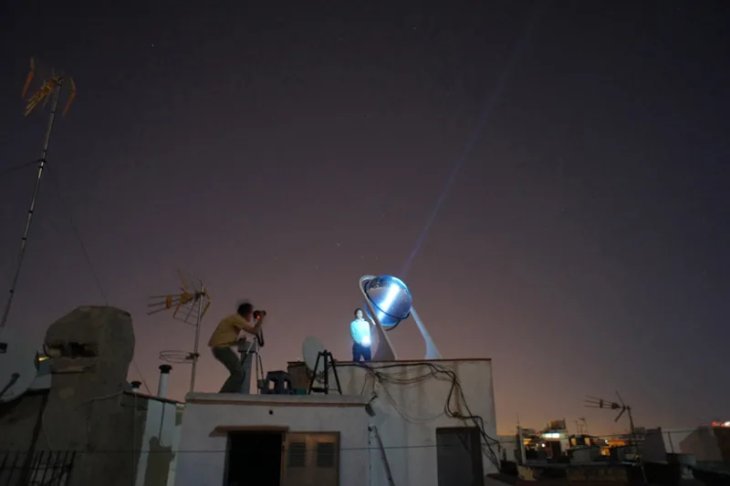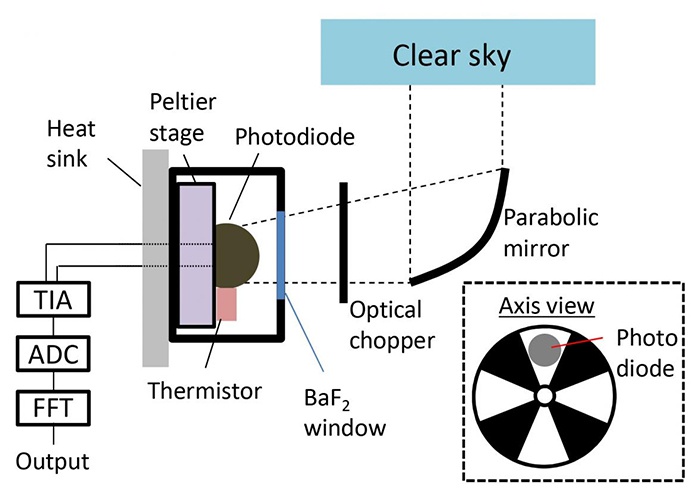Here's How We Can Generate Electricity From The Night Sky
Anil - Sep 16, 2019

In fact, not all places on Earth have a reliable and continuous source of solar energy.
- Japan Hydrogen Breakthrough: Scientists Crack the Clean Energy Code with Mind-Blowing 1,000% Efficiency Jump
- 'Five-second rule' For Food Dropped On The Floor: Is It True?
- Scientists Want To Send 6.7 Million Samples, Including Sperm, To The Moon
Solar energy is considered a reliable renewable energy source for humans. Even so, extreme and different weather conditions make solar power become irregular. Normally, in order to convert solar energy into electrical energy, a large-scale photovoltaic method of optoelectronic principle is needed. Semiconductor materials are also used to convert light particles or photons originating from the Sun into electricity through stimulating electrons in a material such as silicon.

In fact, not all places on Earth have such a reliable and continuous source of solar energy. Recently, however, scientists have found a new way to generate electricity, by studying the significant difference between the cold temperatures of space and the temperate atmosphere of the Earth.
Specifically, Wei Li and Shanhui Fan, who are engineers at Stanford University, along with University of California Los Angeles and materials scientist Aaswath Raman, have successfully invented a way to generate electricity through the transfer of remaining heat during the day on cooling air. Instead of using photovoltaic methods, they compressed the electricity from the heat of light emanating from the surface of the planet, which is heated by the Sun.

They call this process the "negative radiation effect". Accordingly, the photodiodes perform backward as photons under the form of infrared radiation. They leave the system and a small amount of energy is generated in the process.
Although the above test can only generate a small amount of power, specifically 64 nanowatt per square meter (or 10.8 square feet), researchers and scientists predict that if there is a suitable combination in a workable condition, there will be a production of four watts per square meter.
This is really a great initiative and can pave the way for further research in the future through such a prototype. Even in its most primitive form, the finding could help the operation of low-power devices and machines, such as hearing aids or laser pointers, at night.
Featured Stories

Features - Jul 01, 2025
What Are The Fastest Passenger Vehicles Ever Created?

Features - Jun 25, 2025
Japan Hydrogen Breakthrough: Scientists Crack the Clean Energy Code with...

ICT News - Jun 25, 2025
AI Intimidation Tactics: CEOs Turn Flawed Technology Into Employee Fear Machine

Review - Jun 25, 2025
Windows 11 Problems: Is Microsoft's "Best" OS Actually Getting Worse?

Features - Jun 22, 2025
Telegram Founder Pavel Durov Plans to Split $14 Billion Fortune Among 106 Children

ICT News - Jun 22, 2025
Neuralink Telepathy Chip Enables Quadriplegic Rob Greiner to Control Games with...

Features - Jun 21, 2025
This Over $100 Bottle Has Nothing But Fresh Air Inside

Features - Jun 18, 2025
Best Mobile VPN Apps for Gaming 2025: Complete Guide

Features - Jun 18, 2025
A Math Formula Tells Us How Long Everything Will Live

Features - Jun 16, 2025
Comments
Sort by Newest | Popular